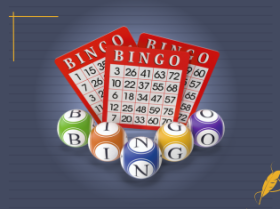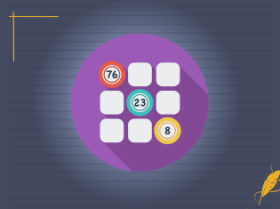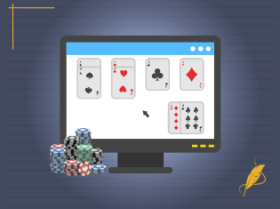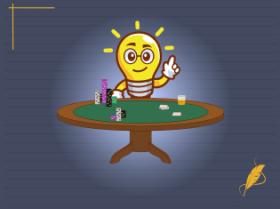Blackjack seems like a game of pure luck, but card counting can give players a real advantage. Learning how to count cards is not difficult, but it can be a tricky skill to master. Read on for our complete guide to increase your odds against the house.
What’s Card Counting?
The idea is to keep track of the cards that have been dealt. Players can get an insight into what could come up next. The probability of hitting particular cards can, therefore, be assessed, giving players a chance to come out on top. This blackjack strategy aims to judge roughly how many high or low cards are left to deal.
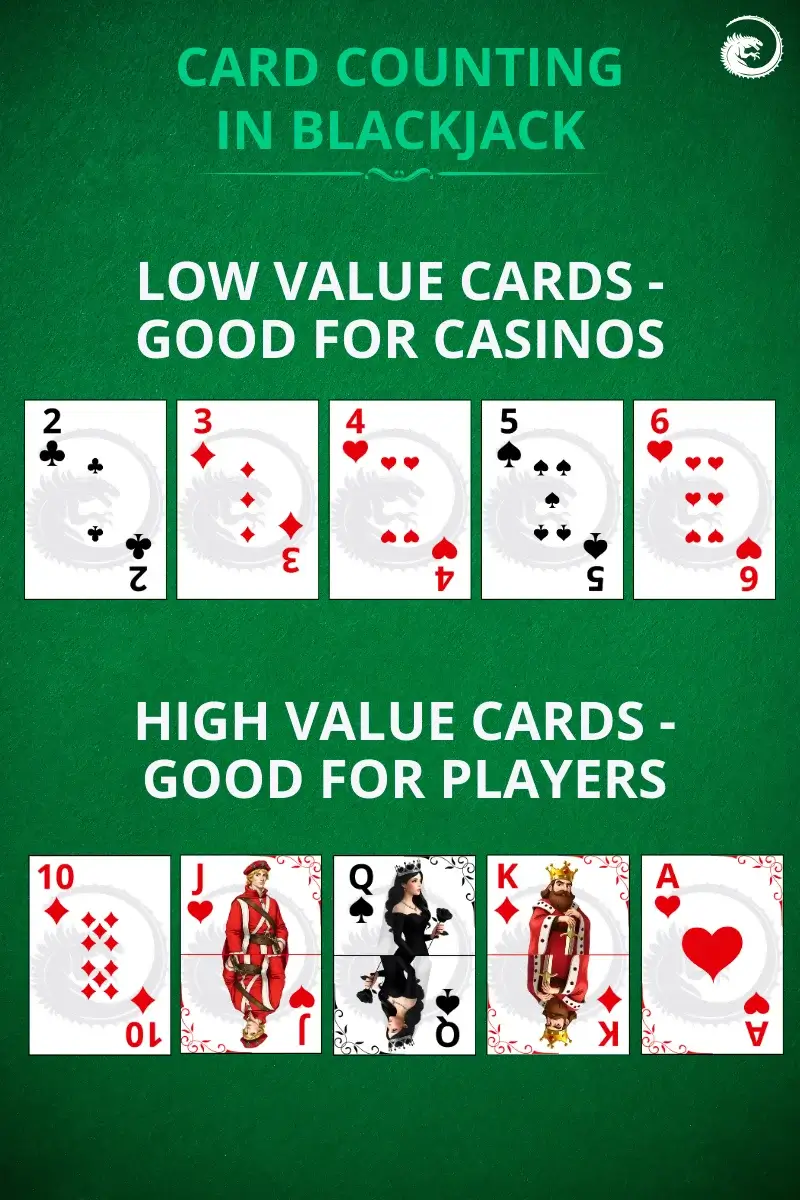
How to Count Cards for Beginners
While newcomers need help and practice, the basic steps are straightforward:
- Assign a value to each card. For instance, a king can be deemed -1, while a two might be given the value +1.
- As the cards are dealt, use the value system to keep track of which cards are no longer in the deck.
- Every time a king comes out, take off -1 on to the running total, or add+1 for a two, and so on.
- Adjust your bets based on the true count — wager higher when it’s positive and lower when negative.
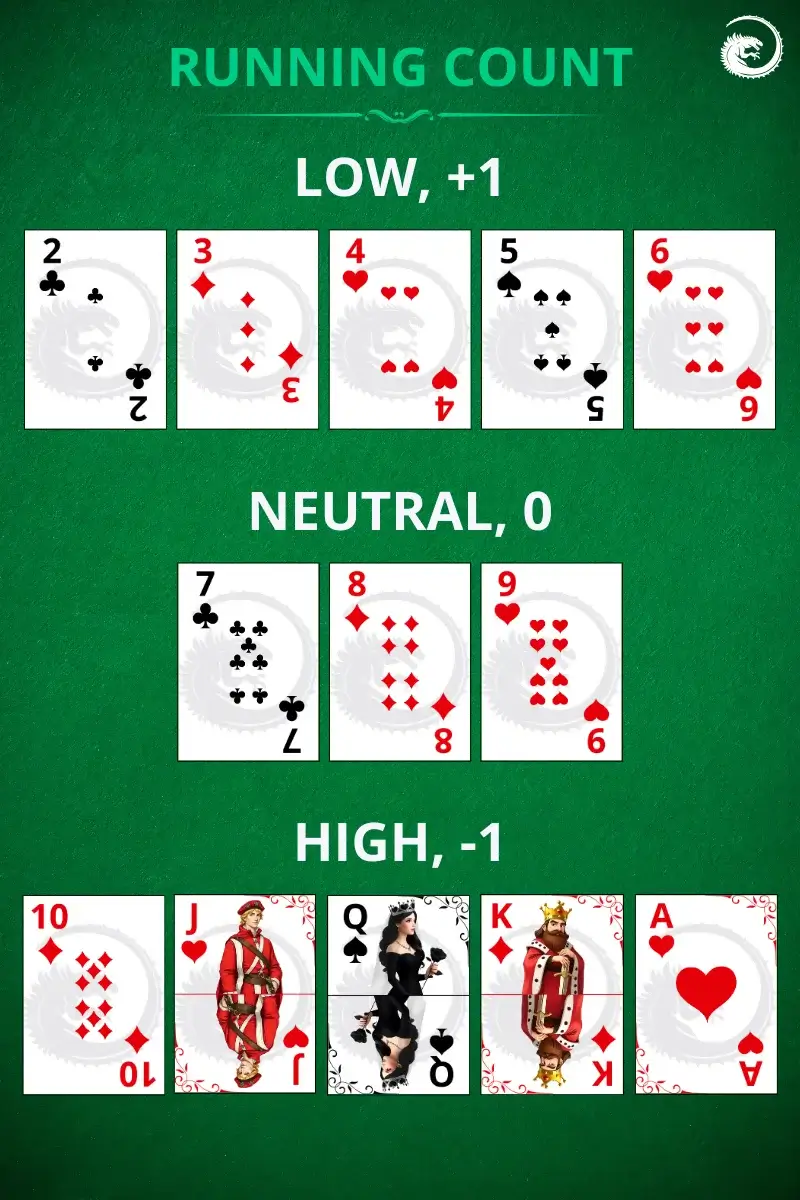
How Card Counting Works
The running count is a simple total of the cards dealt, where you add or subtract using a points system. For example, if 20 low cards (+20), 10 neutral cards (0), and 14 high cards (-14) are dealt, the running count would be +6.
The casino’s house edge for a blackjack game is usually quite low, sitting under the 1% mark, which is why it is so popular to play. But by using card counting, the house edge can be eliminated. Indeed, the advantage can then be on the side of the player.
Note:Keep in mind that casinos do not like it when players count cards in blackjack. In fact, if they suspect a player does it, he is likely to be asked to leave.

-
Opportunity to reverse the house edge and give the player an advantage
-
Straightforward to learn thanks to the easy value system for cards

-
Not easy to master, and mistakes can be costly if they are made
-
Chance of the casino catching the player and banning him from gameplay
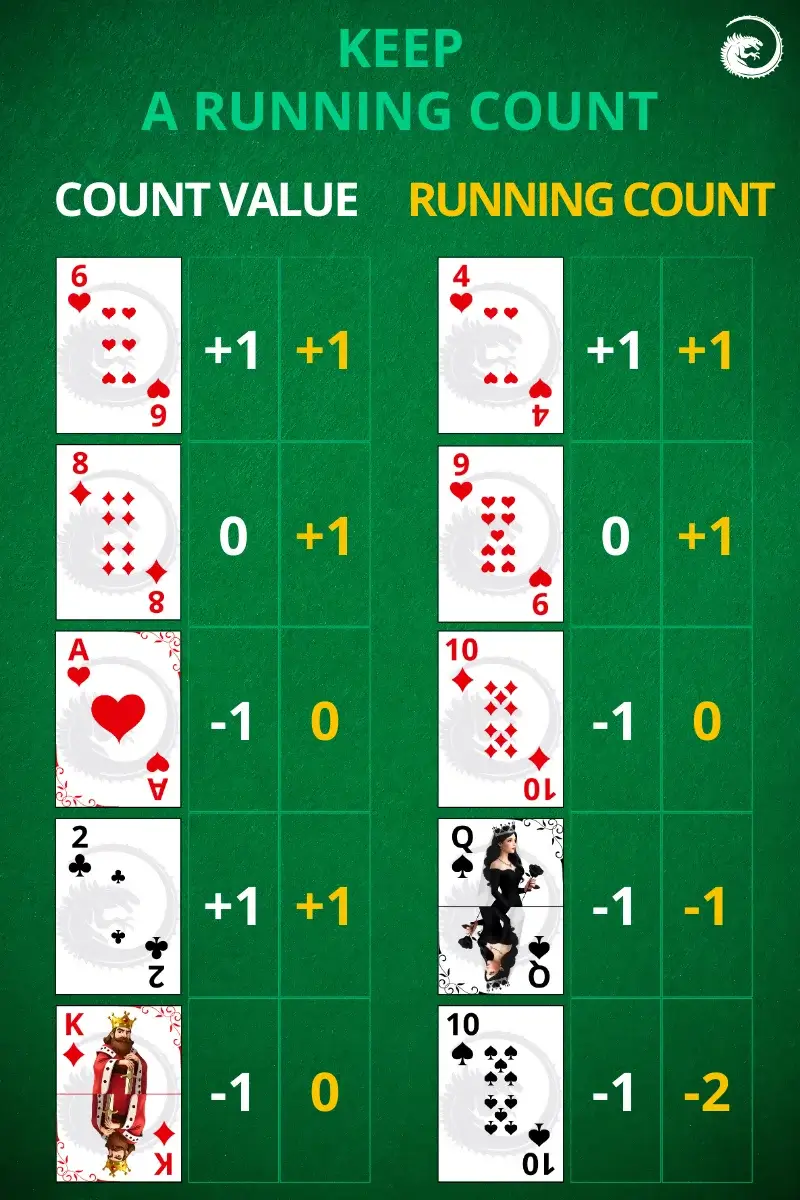
True Count
The true count must be adjusted for the number of decks in play. Each blackjack game is different in this regard. The more decks in play, the more complicated counting cards will be for the player.
To work out the true count, divide the current running count by the number of decks left. So, if the running count is +9, but there are three decks left, the true count works out as +3.
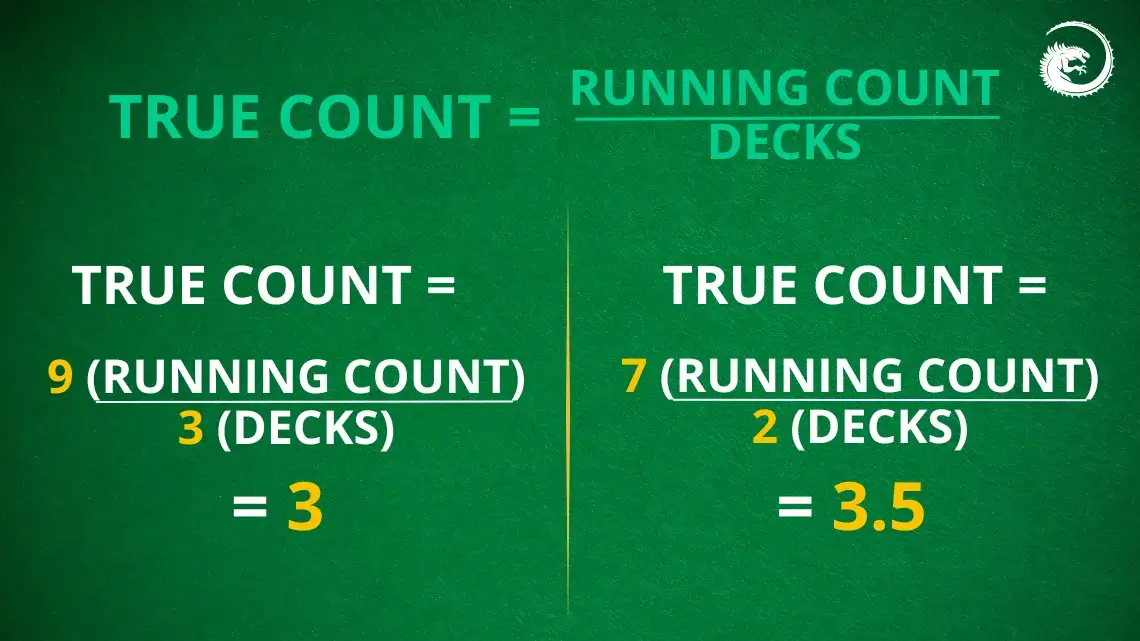
Note:The house edge drops by around 0.5% for each point of the true count. The true count of 2 or more gives the player a strong advantage over the house.
Bets Adjustments
A betting adjustment strategy based on the true count of +2 and more involves increasing your bet as the count becomes more favourable. You subtract 1 from the true count and multiply that by your standard betting unit. This way, your bets grow larger as the true count rises.
For example, in case your true count is 3 and your bet unit is $5, then the optimal bet is 2x$5=$10.
Kelly’s betting strategy, also known as the Kelly Criterion, is a method where you bet a percentage of your total bankroll that matches your current advantage. This approach maximises long-term profits by adjusting your bet size based on the strength of your advantage.
For example, if your advantage is 2, you would bet 2% of your bankroll.
One more of the proven calculations is this one: Count +x: bet unit*(x+1)
If your betting unit is $5, the true count is +3, the optimal bet is $5*(3+1)= $20.
The key is to increase your bet when you have the advantage and reduce it when you don’t. Avoid making sudden, large bets, as this can draw unwanted attention.
Different Card Counting Systems
Various card counting strategies can be used in blackjack at the casino. The most basic and easiest to learn is the Hi-Lo, where each card is deemed to be of high or low value. You can also try out the following more complex approaches.
Hi-Lo
High cards — face cards and aces — are given the specific value of -1, while low cards (those worth 2 to 6) are given the +1 value instead. Everything from the middle of the pack, 7s to 9s, counts as 0 for the purpose of the system. Make a note of each card dealt and update the running total to count cards correctly.
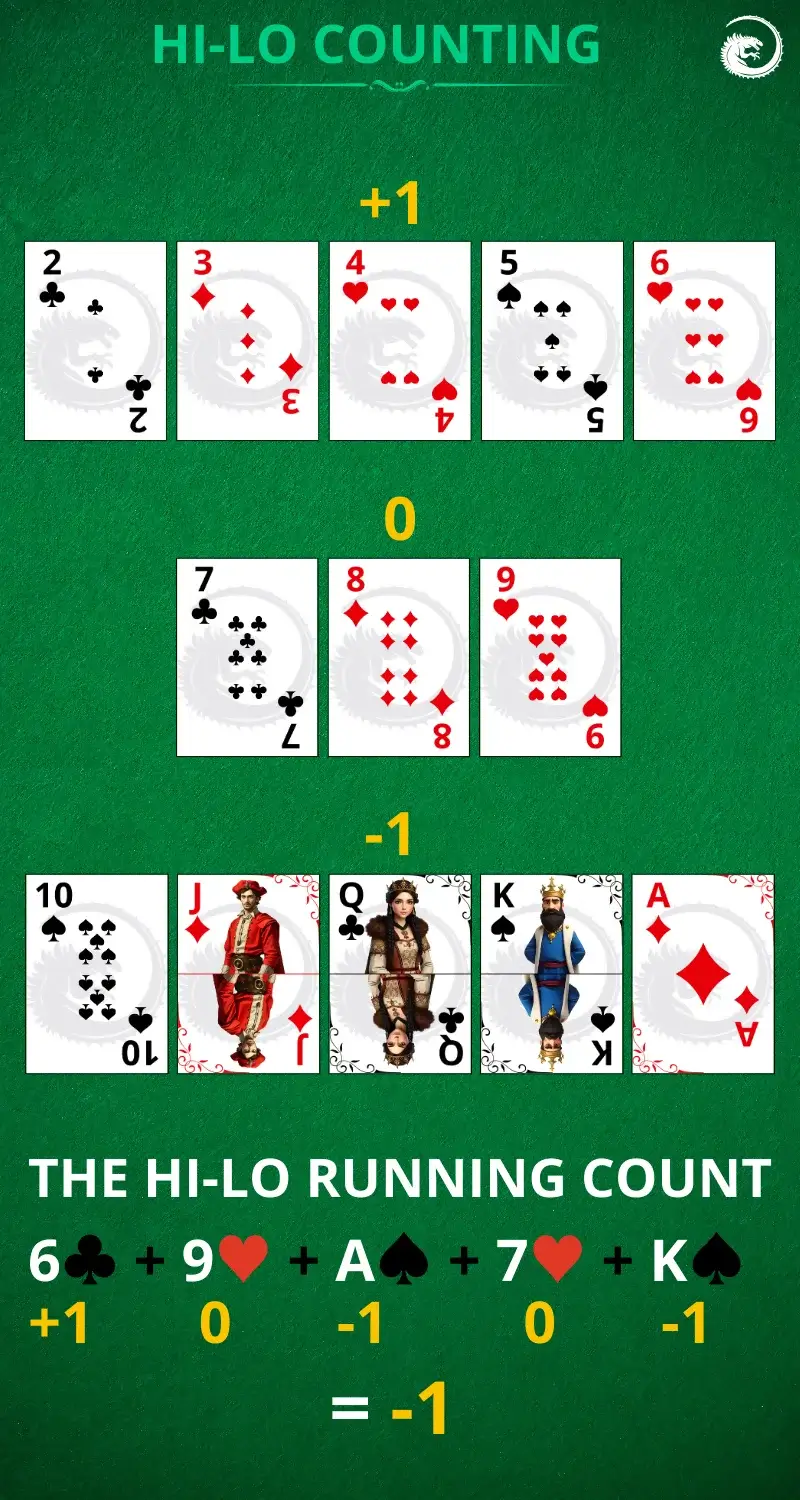
Red Seven
This blackjack counting card system is a useful one for newcomers to start with. Cards are +1 if 1-6, 8s and 9s are 0, while face cards are -1. As the name suggests, 7s hold the key. A black seven is 0, but a red seven counts as +1. Unlike some other approaches, there is no need to turn the running count into a true one.
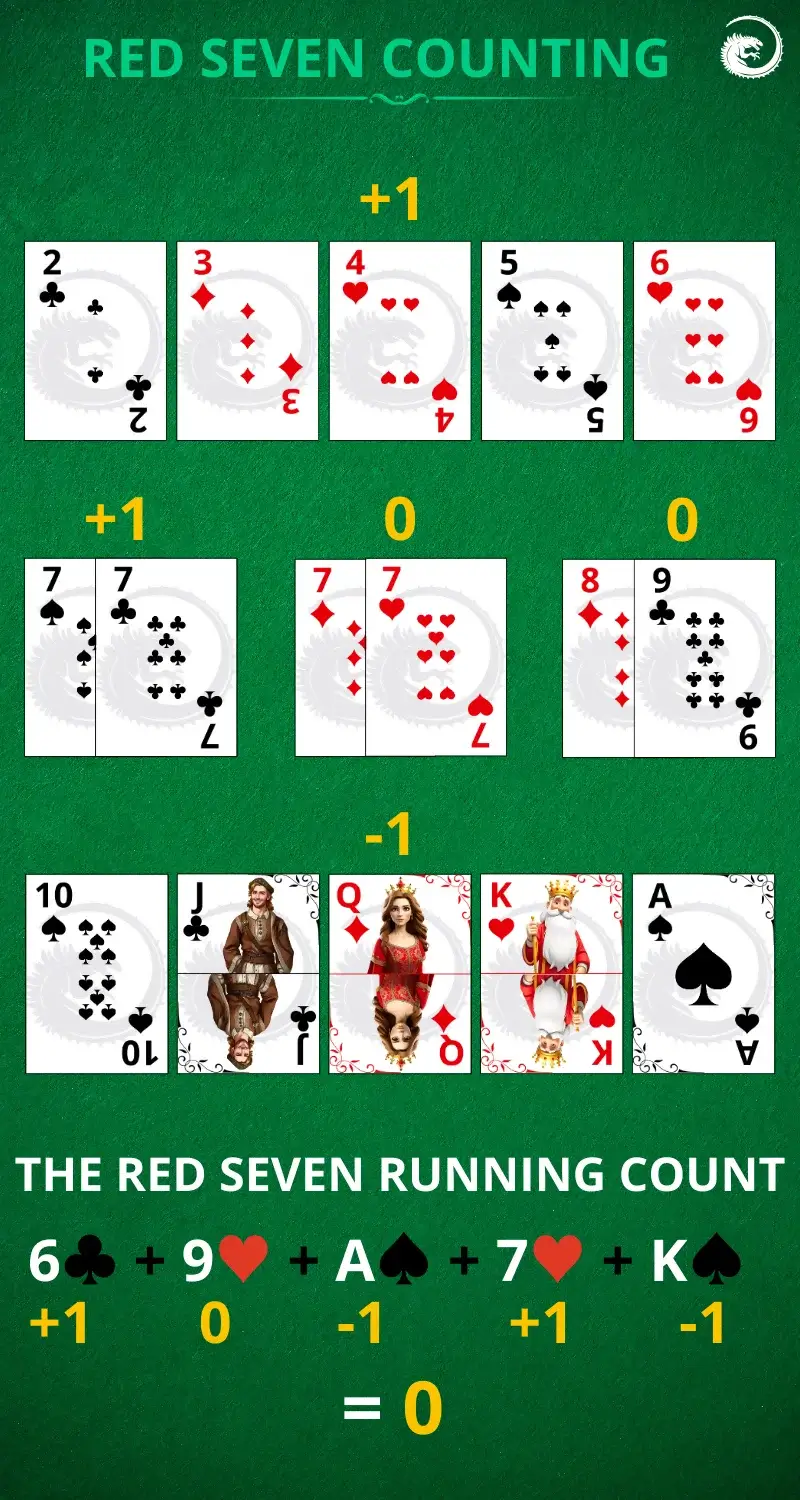
K-O
This method is similar to Hi-Lo, but 7s are given a +1 value. Face cards and 10s are -1, 8s and 9s are 0, and everything else is +1 in the K-O system.
The advantage of using the K-O method for counting cards at the blackjack table is that it is probably easier to grasp than any other. However, it is not as accurate.
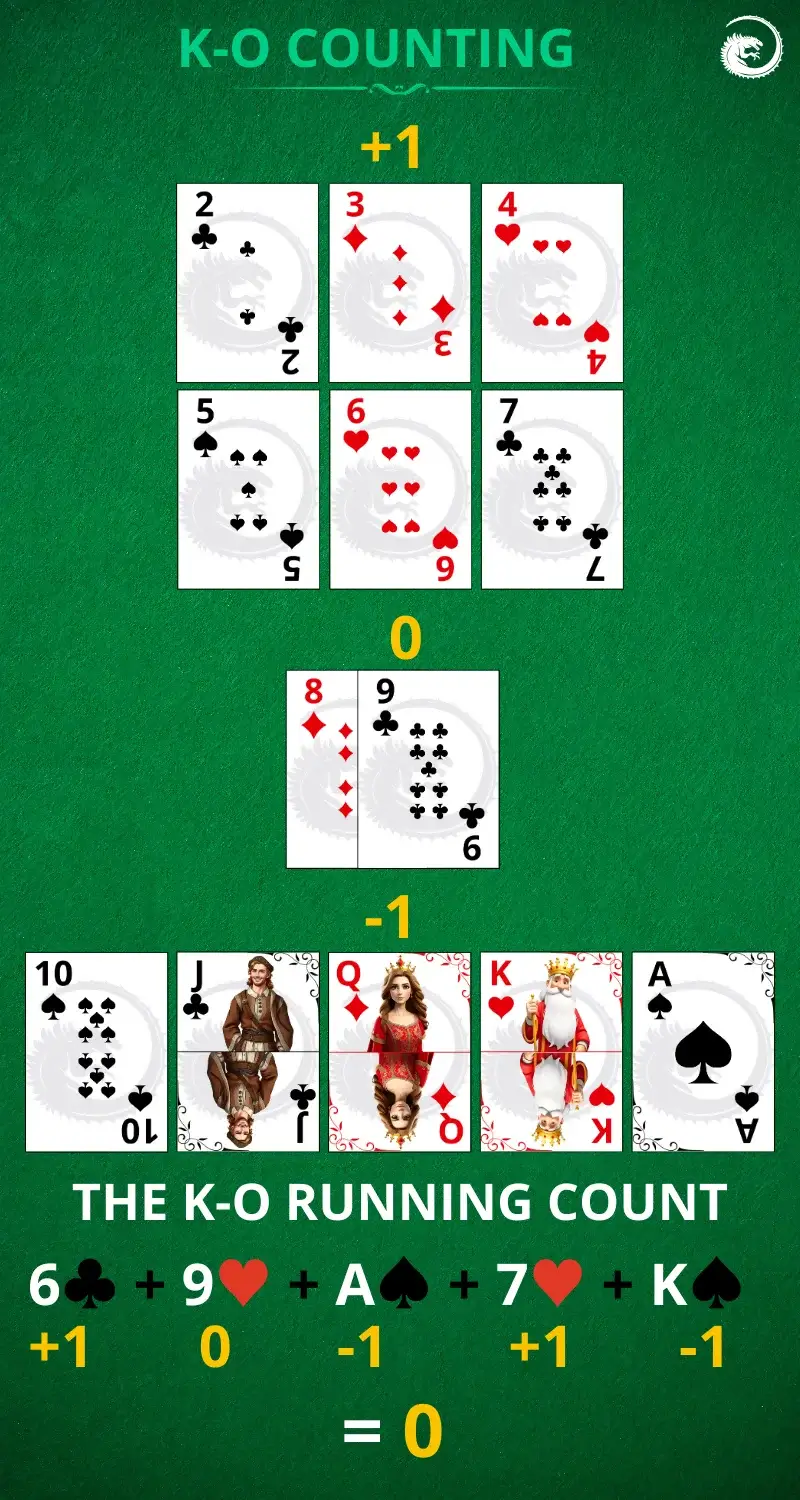
Omega II
Omega II sees different values assigned than most blackjack systems. Here, the deck’s 2s, 3s, and 7s are worth +1, while 4s, 5s, and 6s are valued at +2. Aces are 0, face cards and 10s are -2, and 9s are -1. Negative counts using Omega II would indicate plenty of high cards remain in the deck.
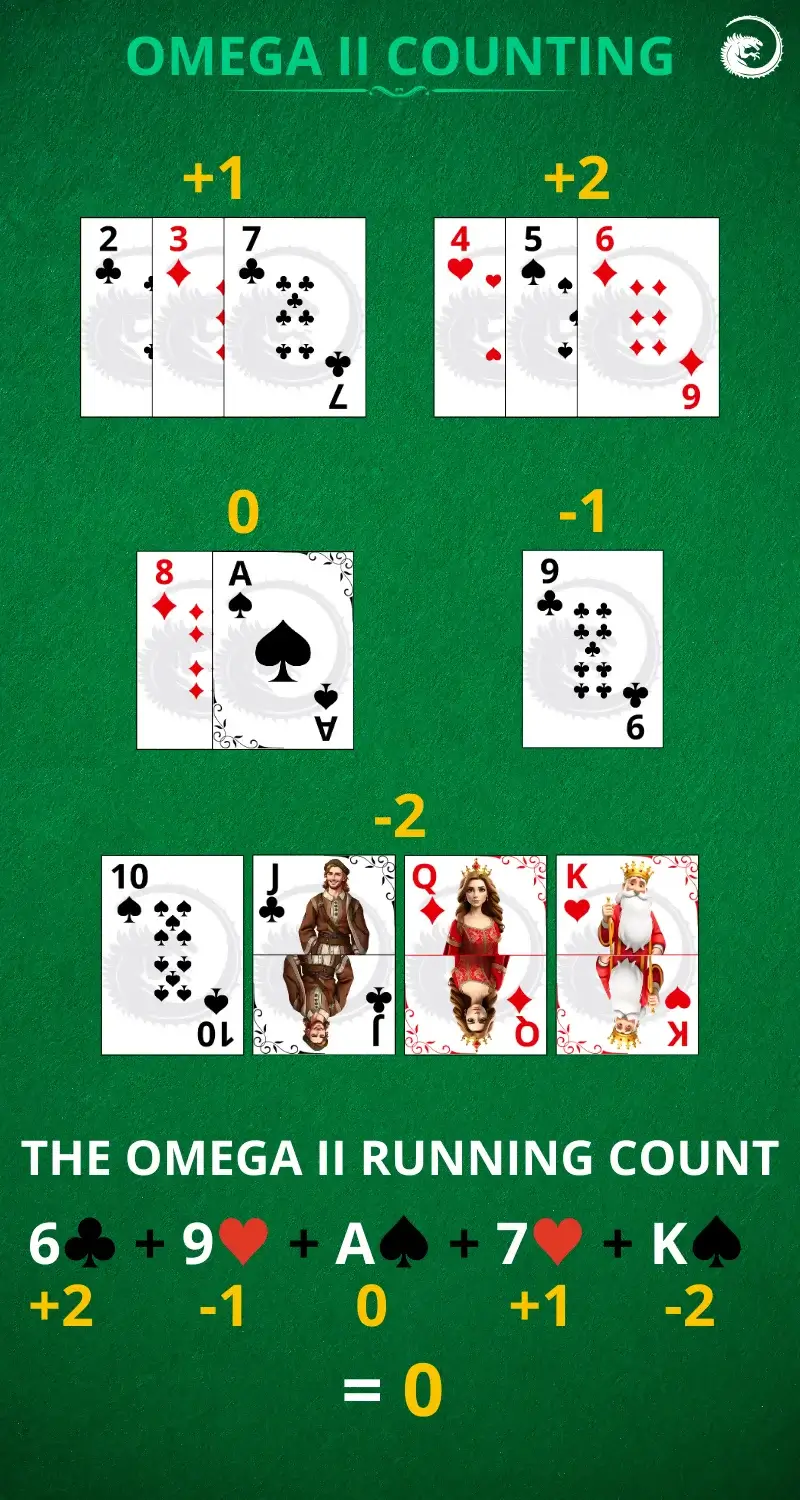
Wong Halves
This technique is one of the most complex and is, therefore, not for beginners: 5s are worth +1.5, but 3s, 4s, and 6s are valued at +1. The deck’s 2s and 7s are worth +0.5, and 8s are 0, but 9s are assigned a value of -0.5. The face cards, aces, and 10s are all -1. Keeping track of so many different values makes this one challenging.
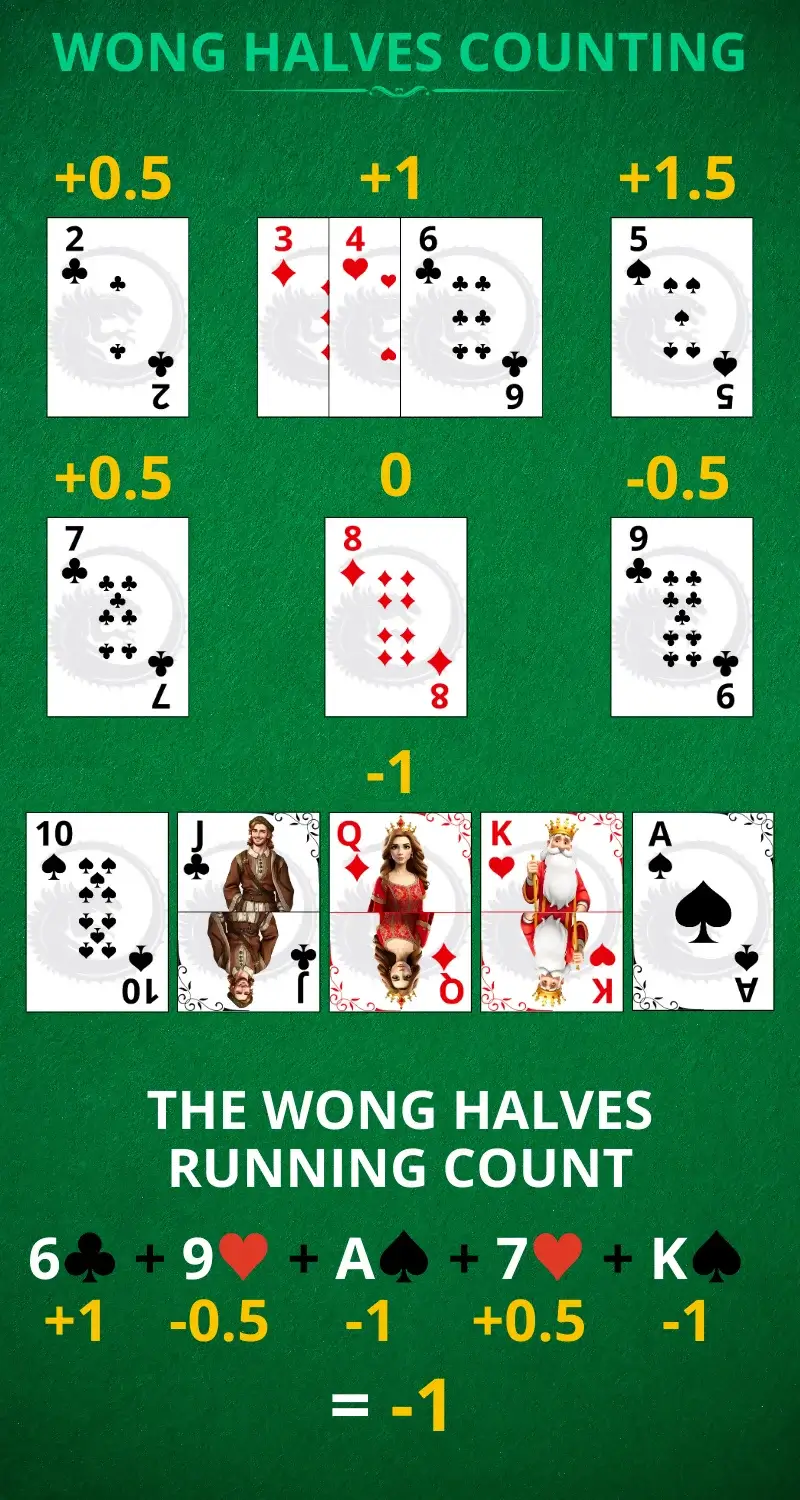
Zen Count
Similar to Omega II, 4s-6s are worth +2 with the Zen count, while 2s, 3s and 7s are +1. A neutral value is given to 8s and 9s, with aces deemed to be worth -1 in this system. Face cards and 10s are -2 in the Zen count.
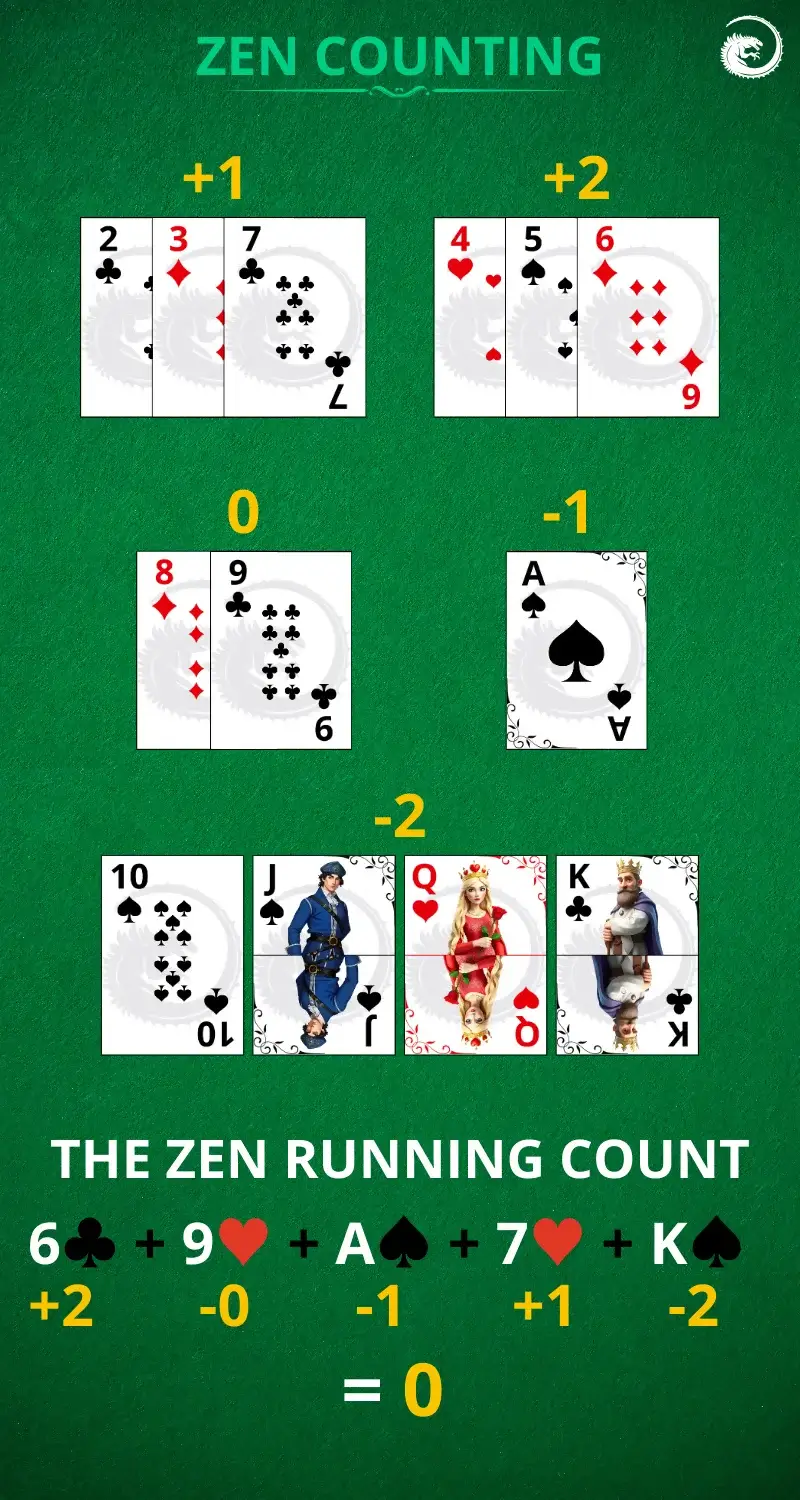
Top Tips on How to Be Successful in Card Counting
Becoming a successful card counter at the blackjack table isn’t easy. It requires specific skills and practice. If you’re thinking about getting started, follow our top tips to boost your chances of success:
- Always keep the count: A good head for maths is a must. If the player loses track of the count, the entire system falls apart.
- Check the game: Discover how to play the exact title. Some blackjack variations have more decks in play than others. For schemes where the true count is used, taking this figure into account is necessary.
- Accurate betting: Make the correct bet based on the count, with no exceptions.
- Find the system that works for you: Various blackjack card counting methods are available. Try out a few and decide which one fits your skills the best.
Note:Newcomers to card counting in blackjack are advised to start with a simple Hi-Lo system. This is straightforward and acts as an introduction to card counting.
Players shouldn’t expect to master card counting overnight. It’s a skill that takes time and practice to perfect, but the potential rewards make it worthwhile. In online blackjack, however, card counting is virtually impossible due to the use of random number generators (RNGs), which reset the deck after every hand. For this reason, card counting is best reserved for live play.



